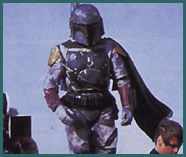It's at this critical stage of operations that I personally become so grateful to the production designer, and his wonderful team of set dressers, prop-makers, painters and craftsmen, who make the sets a joy for me to exploit to the best of my ability, governed only by the confines of the schedule. Shooting time now being so incredibly expensive, one just has to be totally aware of this, and work in a fully professional and responsible manner, not "dilly-dally" about trying to get some airy-fairy effect which probably won't work in the end, then just wind up covering lost time.
On this film there was so much going-on with the preparation of effects, set dressing, getting people costumed and made up, then, having them all "milling around" on the set, doing their own thing, (which, I know has to be done), making a lot of row and noise when doing it, totally unaware of the private battle I am having, trying to 'paint' a nice picture with my lamps and electricians.
Remember also that one has to find time to keep ahead of the 'shooting" unit, trying to pre-rig, and re-light, up and coming sets. This is a vital part of my work because once having given the lighting rig, I am stuck with it, even if the director decides, he will, after all, shoot this scene quite the opposite way to what he had proposed. That, after all, is his prerogative, so one has to make pretty sure one thinks out the lighting problems well ahead.
Although a film like Jedi had, by it's very nature, a lot of technical problems, this didn't bother me. I find I have enough technical experience and understand go cope with all of these matters. The real heart and soul of the director of photography's job is, what will it look like, up there on the big screen? That is the question to which one has to find an answer, therefore I hope on Jedi some of those answers are satisfactory.
Some of the sequences were very complicated from the optical effects point of view, so ILM, (who do all this work) sent over Richard Edlund and Dennis Muren to supervise these sequences. Almost the whole film was story-boarded, which was an enormous help to the shooting crew.
Some of the necessary lighting equipment was already available in the studios but a lot of it had to be imported from outside companies. The four sets being pre-rigged and pre-lit ahead of time obviously meant that the equipment was put up and left idle, but the company who supplied it, Lee Electrics, made a 'deal' with the producer, so that if the equipment was hanging there doing nothing for say, four weeks, they came to some amicable arrangement about costs.
It became practice that, when we had finished on a set or the schedule demanded that we finish on a set, we would move onto the next one, then George Lucas would come behind us to "mop-up" so to speak. He would pick up extra shots and do "bits and pieces" that he wanted to add to the sequence. Consequently we had a second unit, the cameraman of which was Jack Lowin, who did a super job following us up and shooting extra shots for almost every sequence we did.
I don't think the schedule was very long for a picture that was quite difficult and had some very demanding production problems.
We did twelve weeks shooting in the studios, then two weeks location in Yuma, Arizona, two weeks in the redwood forest in Crescent City, Northern California, and one week of traveling matte work at I.L.M. in San Rafael, which makes 17 weeks shooting in all— then that was it!
The Yuma location presented me with plenty of problems. Firstly, the angle at which an enormous set had to be built in relation to a deep sand dune pit, bearing in mind it was some months ahead of the time when we would actually be shooting there and the sun would be rising and setting at different times of day. Then whilst we were there, we were trying to use every daylight hour with all the problems we know so well, the sun doing it's east to west 180 trip and also changing color enroute. One of my main shooting problems here was not having a variable shutter on the Arris. At the high light levels that the desert brings, I found myself having to use neutral density filters when I was not particularly keen to.
The Redwood Forests of Northern California were quite a different matter. The light meter would frequently say zero but we were lucky enough to have taken delivery of the latest Kodak emulsion 5293. This literally saved our lives so far as this particular location was concerned. Even with 5293 we often shot at T1-4 and T2. It is amazing how much one can do with a couple of color corrected mini-brutes when working at these low light levels.
I have subsequently used 5293 extensively and find it a superb negative to work with. I am looking forward to learning what Kodak has achieved with their ED 400 and EI 1000. I am sure it will mean exciting times ahead for the creative lighting fraternity.
I would like to mention that all the location second unit was shot by Jim Glennon and his merry men, and a super job they did too. May I take this opportunity to thank everybody who helped me do my 'bit' and, indeed, anyone who helped in any way to make Return of The Jedi.
